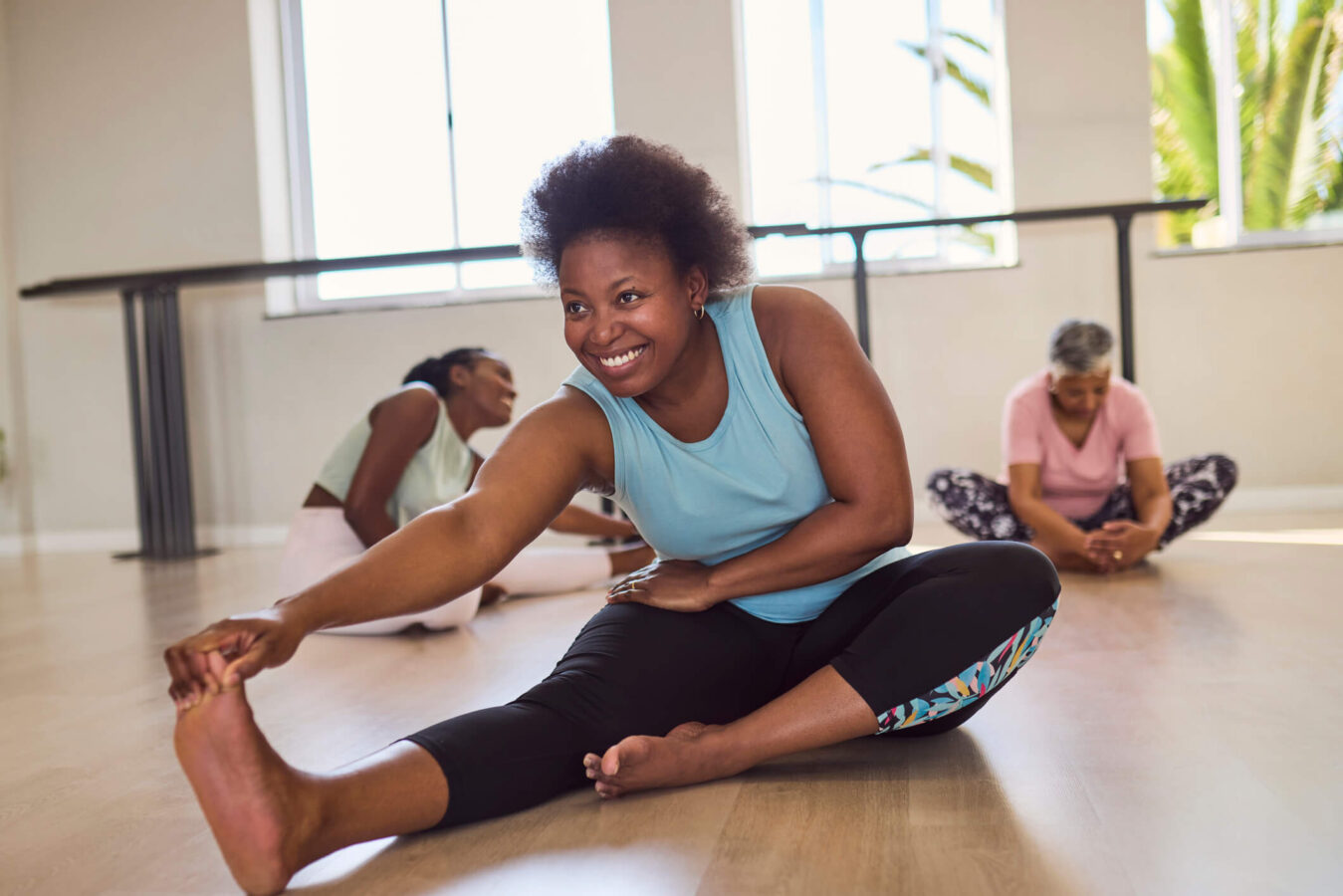
Medically reviewed by Misty Seidenburg
Low-impact exercises str a safe and accessible way to build strength, improve cardiovascular health, and support mobility. They are especially beneficial if you are recovering from injury, managing a chronic condition, or beginning your fitness journey.
This guide can help you get started, whether you’re exploring new ways to work out while managing pain or stiffness, or simply looking for a sustainable routine.
Low-impact exercise refers to physical activity that avoids excessive strain on the joints. These movements may involve keeping at least one foot on the ground or using water and equipment to reduce pressure on muscles and bones.
Low-impact workouts focus on gentle, controlled motion, making them a good fit for people with chronic pain or healing from injury or surgery. These exercises can be done at home, with your physical therapist, or in a group fitness setting, and there are options for all fitness levels.
Starting slowly with low-impact at-home routines is a great way to reintroduce physical activity into your life without a pricy gym membership or complicated equipment.
While low-impact exercises are recommended for people with physical limitations, they are also ideal for anyone looking for an effective and sustainable fitness routine.
This approach to movement can:
By focusing on form and consistency over intensity, you can make these exercises a steady part of a healthy lifestyle.
Low-impact workouts are a practical option for those recovering from injury or surgery, dealing with joint pain or stiffness, or advised to avoid high-impact activities. They are also suitable for individuals returning to movement after a period of inactivity or looking for exercises that align with their arthritis management approach.
These routines may also complement sports physical therapy, particularly when easing back into activity or working to prevent future issues. If you’re unsure where to begin, consulting with a physical therapist or healthcare provider can provide helpful direction.
These exercises cover a wide range of intensities and environments. Some use your bodyweight alone, while others involve equipment or water-based resistance.
A walk around your neighborhood or on a treadmill is a simple, effective way to stay active. It allows you to set your own pace and duration. Even short sessions of low-impact aerobic exercise can support cardiovascular health.
For indoor workouts, foldable walking pads offer a convenient option. They’re compact, easy to store, and fit into smaller living spaces, making it easier to walk at home without needing a full-size treadmill. Some even come with adjustable guard rails to help with steadiness. Walking is also great for bone health and reducing the risk of conditions such as osteoporosis.
A stationary bike is a joint-friendly way to get low-impact cardio exercises, making it a common choice in rehabilitation and general fitness routines. It helps build stamina and strengthens the legs without the impact of running.
A mini pedal exerciser can be a practical alternative for those short on space. It provides similar benefits to a full-size bike in a compact design that fits easily under a desk or in a closet when not in use.
Resistance bands are lightweight and portable tools that add variety and challenge to a fitness routine. They’re especially useful for building strength and improving flexibility without placing excessive stress on the joints.
Some common resistance band exercises include seated rows to target the upper back, banded squats to engage the legs and glutes, and standing leg presses to work the lower body. These movements can be easily adjusted for different fitness levels, making bands a flexible option for many workout plans.
Yoga, Pilates, and Tai Chi are all practices that emphasize mindful movement, balance, and controlled breathing. Each offers unique benefits for improving flexibility, core strength, and overall body awareness.
Yoga focuses on posture and alignment, Pilates strengthens stabilizing muscles, and Tai Chi enhances balance and relaxation through slow, flowing movements. These practices are gentle on the joints and can be easily adapted for beginners.
To start safely, look for classes or videos labeled “beginner” or “gentle,” which provide modifications to help you ease into these activities at your own pace.
Water offers natural resistance while reducing impact on joints. Activities like walking in a pool or participating in aquatic therapy or aerobics can help build strength and endurance in a supportive environment.
Creating a customized exercise routine with your physical therapist lets you focus on what works for your body and lifestyle. It’s a chance to make fitness feel both manageable and enjoyable.
Find a physical therapy clinic near you
Discover exceptional physical therapy care. Locate your nearest BenchMark Physical Therapy clinic today.
Low-impact activities are a key component of physical therapy. They are tailored to support recovery, alleviate pain, and improve mobility while minimizing stress on healing tissues. Whether you’re undergoing rehabilitation after an injury or managing long-term conditions like arthritis, incorporating movement into your care plan can be beneficial.
Common approaches in physical therapy include core stabilization exercises, mobility and range-of-motion drills, and safe strengthening exercises using resistance bands or light weights. Some physical therapy programs combine movement with pain management techniques to help clients manage symptoms while staying active.
Not sure where to start? Try one or two exercises from the list above, and gradually add more variety over time. Low-impact routines don’t need to be long or intense to be helpful.
Tips for getting started:
Low-impact exercise isn’t about doing less—it’s about doing what works for your body. Whether you’re easing back into activity or managing chronic discomfort, these movements can help you stay active in a supportive and achievable way.
Everyone’s starting point is different. What matters most is finding a pace and rhythm that supports your goals and respects your limits. For professional guidance and support throughout your fitness journey, find a physical therapy clinic near you.

